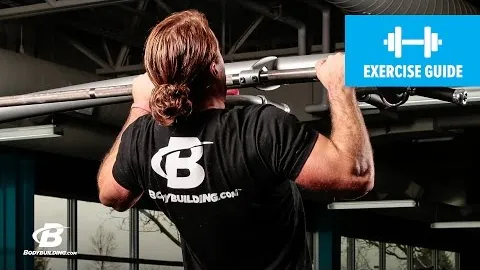



The negative pull-up exercise is an effective way to build upper-body strength and improve your overall fitness level. It is a challenging exercise that specifically targets the muscles in your back, shoulders, and arms. In this article, we will dive into the details of how to perform this exercise correctly, its benefits, and some variations to keep your workouts interesting.
Grip the bar: Stand under a pull-up bar and grasp it with an overhand grip (palms facing away from you) that is slightly wider than shoulder-width apart.
Assume the starting position: Jump or step off the ground so that your chest is approximately level with the bar. Keep your arms extended fully.
Lower yourself down: Slowly lower your body towards the ground, maintaining control throughout the movement. Aim to take approximately three to five seconds to descend.
Reset and repeat: Once you reach the bottom, reset by stepping or jumping back up to the starting position, and repeat the process for the desired number of repetitions.
Negative pull-ups are an excellent exercise for building upper-body strength, especially when regular pull-ups seem too challenging. By focusing solely on the lowering phase of the exercise, you can gradually build up your strength to eventually perform full pull-ups.
The negative pull-up primarily targets your latissimus dorsi (lats), rhomboids, and biceps. These muscles play a crucial role in pulling movements and contribute to a strong and well-defined upper body.
Improved Core Stability: Performing negative pull-ups engages your core muscles, including your abdominals and lower back, as you control your body's movement.
Increased Grip Strength: As you grip the bar and control your descent, your forearm and hand muscles are engaged, leading to improved grip strength.
Upper Body Mobility: Negative pull-ups help improve shoulder and upper back mobility, reducing the risk of injuries and improving overall posture.
This variation involves emphasizing the lowering phase even more by slowing down the descent to ten seconds or more. By increasing the time under tension, you further challenge your muscles and promote greater strength gains.
If you're just starting out or have limited upper-body strength, you can use a resistance band, chair, or partner assistance to make negative pull-ups more manageable. Utilizing assistance allows you to focus on the lowering phase while still building strength.
Once you have mastered traditional negative pull-ups, you can progress to the more advanced one-arm variation. Start by performing regular negative pull-ups while focusing on one arm at a time. This exercise requires significant upper-body strength and stability.
Proper Form: Maintain a neutral spine, engage your core, and avoid swinging or using momentum to complete the movement. Focus on controlled lowering.
Gradual Progression: Start with just a few repetitions and gradually increase the number as your strength improves. Remember that quality is more important than quantity.
Rest and Recovery: Allow sufficient rest between workouts to allow your muscles to recover and adapt.
Consistency: Consistency is key to seeing progress. Aim to incorporate negative pull-ups into your workout routine at least two to three times per week.
The negative pull-up exercise offers an effective way to build upper-body strength, improve muscle development, and enhance overall fitness. By mastering this exercise and progressing to more advanced variations, you can unlock new levels of strength and challenge yourself in your fitness journey. Remember to prioritize proper form, gradually increase the intensity, and be consistent in your training. Incorporate negative pull-ups into your exercise routine and experience the transformative benefits for yourself.
If you're looking for a gym, fitness club or yoga studio, you've come to the right place.
You can find information about gyms in your area. Browse catalog of gyms and find gyms with classes which are you looking for.
On gym page you can find simple information like address, phone or website. You can find list of available classes. You can check availability of personal training or small group classes. On place page you can also see information about open hours.
You can find gyms near you with amenities, courts, studios and equipments.
Use our map to find gym at your city or district.
In Gym Navigator you can find list of exercises with movies for many body parts.
You can browse exercises catalog and find exercises the best of you.
You can also find exercises grouped into workout plans, which you can use to improve you body. Each routine show you exercises one by one and give you possibility to count you progress and count down rest time.